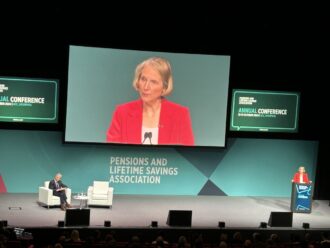The government wants to encourage greater diversification of workplace pension scheme investment portfolios.
Chancellor Rishi Sunak is taking steps to give defined contribution (DC) pension schemes more flexibility to invest in alternative assets, he announced during his budget statement.
His motivations for how the more than £70bn managed by workplace pension schemes should be invested were made clear in a report released following March’s budget. In Build Back Better, the government acknowledged that the UK has a significant need for increased infrastructure spending and that compared to the US, the sector in the UK has struggled to attract private capital.
“There remains a largely untapped pool of capital from institutional investors, particularly defined contribution (DC) pension schemes,” the report said, adding that investment also tends to be concentrated in London and the South East.
To address this challenge, the government is launching a consultation to decide if the cost limits placed on DC schemes are an obstacle to investing in illiquid assets.
This will not be the first time that the impact of the charge cap, which limits DC schemes to paying no more than a 0.75% management fee, has been assessed. It was put under the microscope by the Department of Work and Pensions in 2019 and 2020.
Yet industry body the PLSA met the news with caution. “This is a complex issue involving calculations of risk and return as well as fees,” a spokesperson said.
This response was designed to remind the government that the charge cap was created to provide members of smaller pension pots with better value by stopping them from handing too much of their investment gains to their external managers as fees. However, the drawback has been that portfolios have offered savers little in the way of diversification.
Indeed, 76% of assets managed by British DC schemes in 2017 were invested in bonds and equities and were predominantly managed passively.
With the average DC portfolio having a strong growth focus, due to its younger membership, and investment risk effectively transferred to savers, growth assets and developed markets equities feature heavily in these portfolios. This has been a successful strategy in rising markets.
Growth-oriented DC default funds booked strong returns in the past year. For example, Nest’s default 2040 Retirement fund grew by more than 8% in 12 months. But such strategies could come back to bite scheme members if equity markets crash.
Nest has acknowledged this dilemma and aims to respond with broader diversification.
Anders Lundgren, Nest’s head of public markets and real estate, told portfolio institutional that he has always worked to diversify the master trust’s portfolios. “As developed market equities become more crowded and given the likelihood that markets will continue to be turbulent, we want to find areas that can continue to deliver the performance we want. This includes increasing our exposure in private markets, such as private credit and unlisted- infrastructure equity.”
But the government might have to look beyond the charge cap if it wants to lift restrictions on holding illiquid assets. A 2019 report by the Pensions Policy Institute (PPI) revealed that most DC scheme providers already stay within the 0.75% limit. These costs are likely to have come down significantly during the past two years as DC assets have grown significantly, giving them a stronger bargaining position. For example, The People’s Pension’s assets have grown by £3bn to £13bn in the past year, while Nest’s assets now stand at more than £15bn and with almost 10 million members, it covers nearly a third of the UK’s workforce.
But there are other obstacles that prevent DC schemes from investing in illiquid assets. The key challenge being a requirement to offer daily valuations, which effectively excludes most illiquid assets.
Unlike most defined benefit (DB) schemes, which face an ageing membership and are working towards de-risking their portfolios, the average DC scheme tends to have a much longer investment horizon, due to their younger membership and could benefit from an illiquidity premia.
The rapid growth of DC scheme assets could offer a strong incentive for the government to pick up the baton. By the end of 2020, the value of assets under management in DC schemes had grown by 222% since auto enrolment started in 2012, about half of which was held in master trusts, according to The Pensions Regulator. It is expected, according to PPI, that this market could be close to £1.7trn by the end of the decade.




